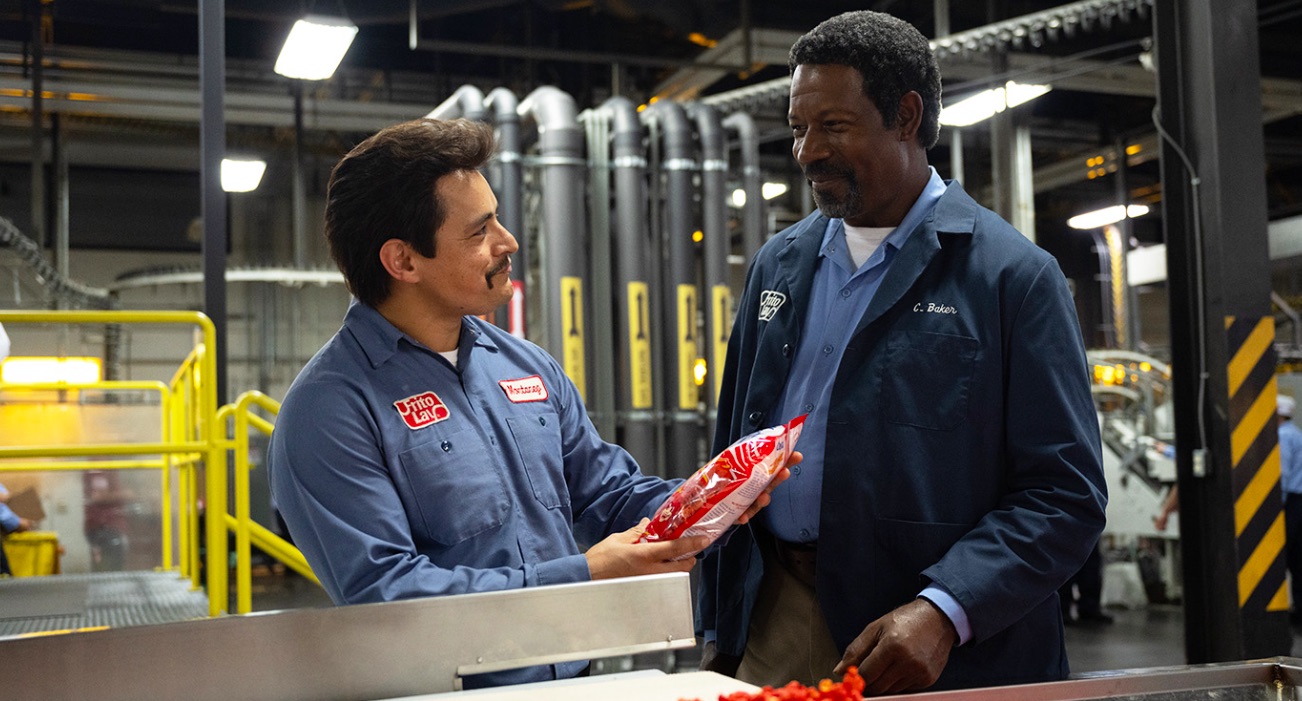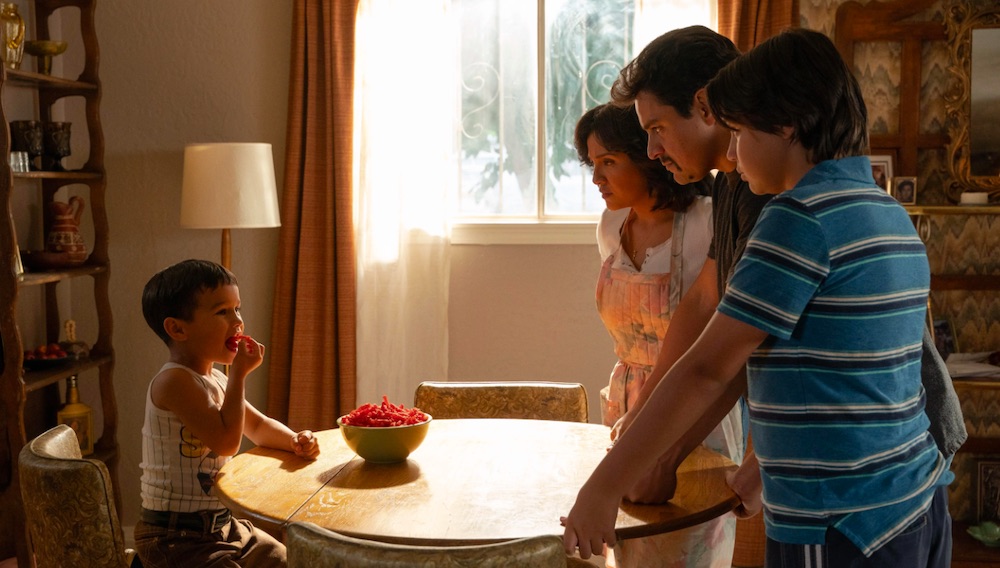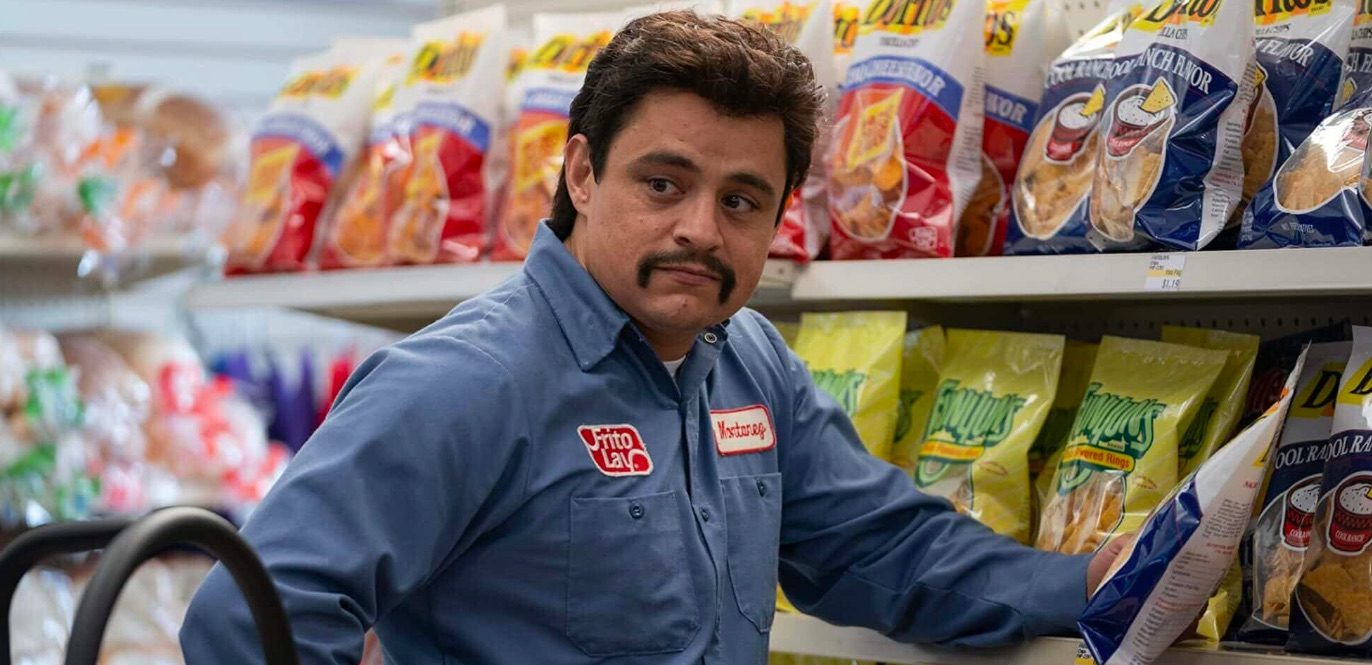Hulu’s biographical comedy-drama film, ‘Flamin’ Hot’ follows the story of Richard Montañez, who becomes a legend in the field of snakes when he invents a new flavor that takes the world by storm. Directed by Eva Longoria, this is a rags-to-riches story of a janitor whose life is turned around when he decides to pitch his ideas to his bosses rather than believing that his ideas and dreams don’t matter. While focusing on Montañez’s success story, the movie also explores his relationship with his family, especially the love story with his wife, Judy. If you want to know more about the origins of the story, then here’s what you should know.
Flamin’ Hot is Based on Richard Montañez’s Memoir
‘Flamin’ Hot’ is based on ‘A Boy, a Burrito and a Cookie: From Janitor to Executive,’ a memoir by Richard Montañez. In the book, he recounts the story of his struggle and how his life was turned around when he invented the new flavor that became Flamin’ Hot Cheetos. As depicted in the film, Montañez worked as a janitor at Frito-Lay’s Rancho Cucamonga plant. Here, he came up with the idea, which he pitched to former Frito-Lay executive Al Carey and then-PepsiCo CEO Roger Enrico in 1991.
Flattered that @katyperry enjoys my creation so much! Loved her costume. Here I am jammin' to her creation. #Cheetos pic.twitter.com/vwJXoyo4Bf
— Richard P. Montañez (@RPMontanez) November 5, 2014
“Frito-Lay had something called the method-improvement program, looking for ideas. That kind of inspired me, so I always had these ideas for different flavors and products. The only difference in what I did, is I made the product instead of just writing the idea on a piece of paper and sending it. They would forward those products to the appropriate people, and I didn’t know because I was just a frontline worker,” he said. He claimed that he was pushed out of the process of test markets and other things. Despite the odds stacked against him, he persevered and rose through the ranks of the company.
Over the years, Montañez talked about his story through various mediums, which turned him into an iconic figure. However, the wrench in the narrative was thrown when Frito-Lay told The LA Times that Montañez’s claims were false. Following an internal investigation, the company said: “None of our records show that Richard was involved in any capacity in the Flamin’ Hot test market. We have interviewed multiple personnel who were involved in the test market, and all of them indicate that Richard was not involved in any capacity in the test market.”
According to the article, the creation of Flamin’ Hots was a collaboration between professionals in 1989. The company wanted to create a new product to compete with the ever-growing demand for spicy snacks. Lynne Greenfeld was assigned to the project to develop the brand and is credited with coming up with the name “Flamin’ Hot.” Six former employees corroborated this story by revealing that the “sales group in the northern United States asked for them.”

Moreover, several discrepancies were found in Montañez’s narrative, especially regarding the role played by Enrico. Montañez said that he pitched the idea to Enrico in person. However, this doesn’t fit the timeline because Enrico didn’t work at Frito-Lay then. He became CEO about six months after Flamin’ Hots were already sent out into the test market.
While his claims to invent Flamin’ Hots might be challenged, this doesn’t change the fact that Montañez did work his way up from plant work to the director of marketing. He pitched several new initiatives while helping the company grow. By contradicting his claims, Frito-Lay said they don’t mean to dumb down his achievements. They said: “That doesn’t mean we don’t celebrate Richard, but the facts do not support the urban legend.”
Despite the doubts circling him, Montañez has held fast to his story. He says that the discrepancies might be due to the lack of documentation at the time because he was a low-tier employee. “Nobody was telling me, ‘This is how executives work.’ I wasn’t a supervisor, I was the least of the least. I think that might be one of the reasons why they don’t have any documentation on me. Why would they?” he said.

The Times reported that around the time the story about the questions surrounding Montañez’s claims was published, the creators of ‘Flamin’ Hot’ were already notified of it, and they still moved forward with the project. Talking about the controversy, director Eva Longoria said that it didn’t matter because they had “set out to do the true story of Richard Montañez, not the history of the Flamin’ Hot Cheeto.” “The movie is about his life — about obstacles he’s overcome, about his childhood, about his relationship with his dad, about this love story between Richard and Judy,” Longoria added.
The filmmakers also emphasized the story’s message, which they hope “inspires people to do the right thing.” While the invention of Flamin’ Hot Cheetos is part of the story, the core is about “overcoming adversity and racial discrimination.” Considering all this, we can say that apart from the controversy surrounding the credit for the invention of Flamin’ Hot Cheetos, the movie remains true to the account of Richard Montañez’s life, as shared by him in his memoir.
Read More: Where Was Flamin’ Hot Filmed?


You must be logged in to post a comment.